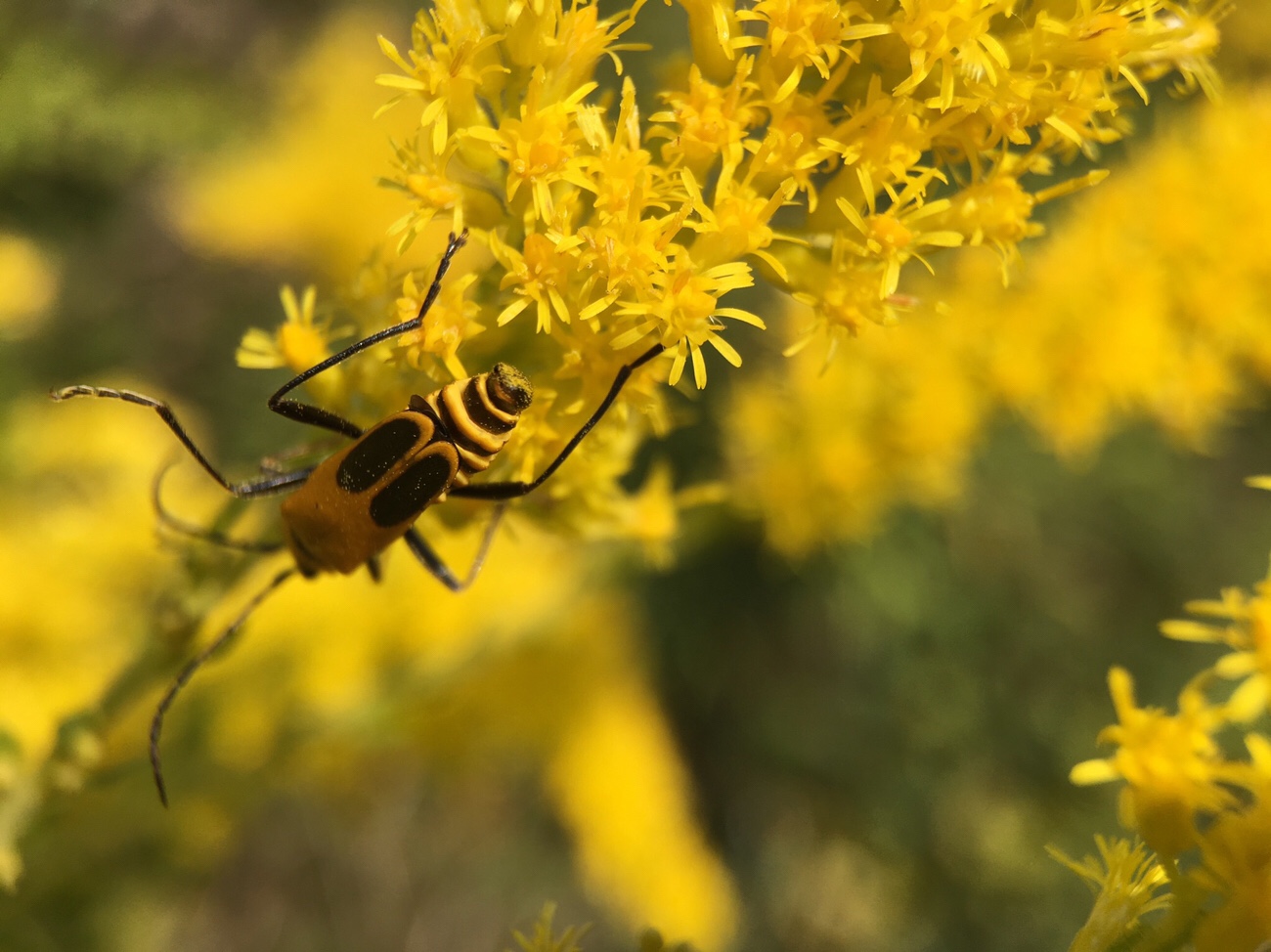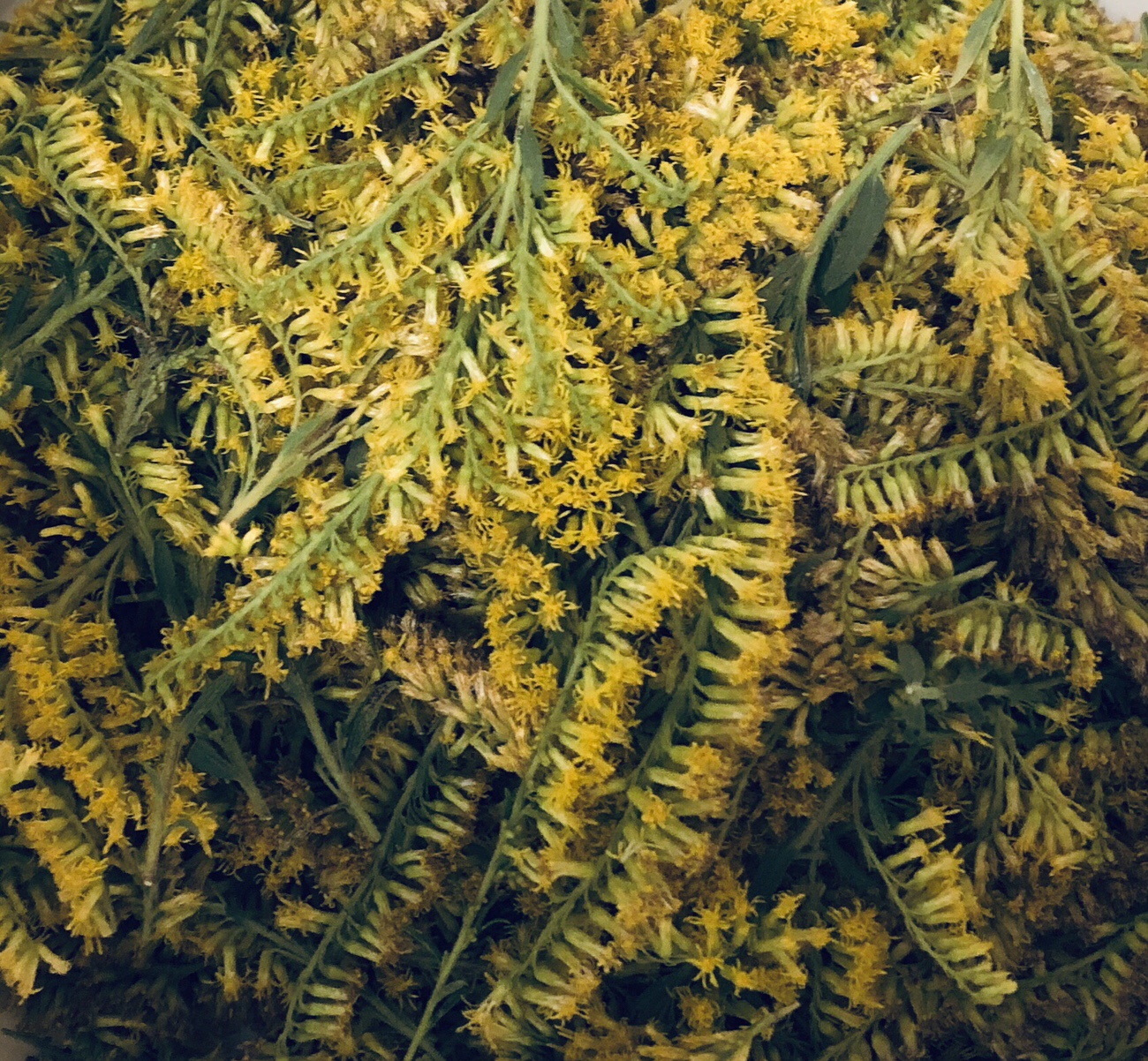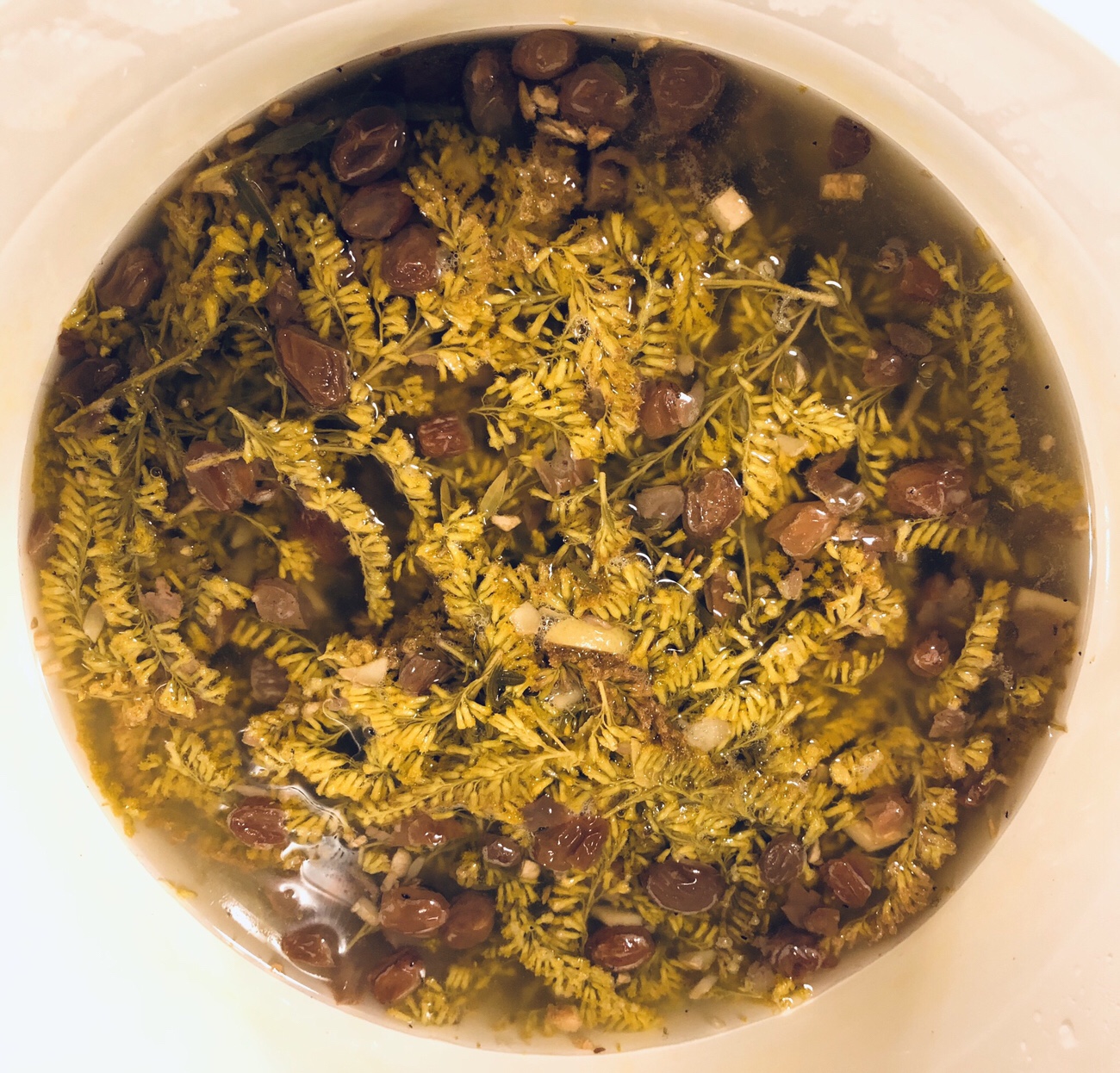
The goldenrod is blooming! Pollinators are busily working the plentiful blooms, a favorite of the Pennsylvania Leatherwing Beetles (also known as Goldenrod Soldier Beetles). With Autumn now upon us, it felt like it was time to start another batch of this special wine.
It’s easy pickings – I was able to pluck the needed 4 cups in just a few minutes, right out back. It’s a jungle out there, with wild-growing sumac (the same one that supplied the wine berries), thistle, various wildflowers, and lots of goldenrod growing amok. The downside of all this unfettered growth is that some kind of voracious biting bugs left about 15 itchy welts on my legs (I was in shorts). I saw a single mosquito (and slapped it into the next life), but something else was responsible for the other (numerous, aggravatingly itchy) bites. Who knew that a blood sacrifice would be required?
The process begins with boiling minced ginger in water. I diverged from the instructions pretty quickly here: I clipped the goldenrod flowers off the green stems and shook out any remaining critters (so many teeny tiny spiders!) before putting the blooms into the fermenting bucket. I added the chopped raisins, lemon juice, and freshly-brewed tea. The steeping ginger water then went atop the other ingredients in the fermenter, and 4 cups of sugar were stirred in. The fermenter was covered for several hours.

Later in the evening, when the liquid had cooled, I pitched the champagne yeast. The next day, foamy areas at the top of the liquid evidenced fermentation beginning. I’ll stir the must daily for the next few days to keep it aerated.
A couple of days later and the fermentation is rolling right along. Floral and herbal wines tend to foam less than fruit wines, but foamy bubbles do appear in the fermenter when the must is stirred, and there’s audible fizzing. Soon, it’ll be ready to be strained into the secondary fermenter to finish its transformation into gorgeous herbal wine.

Not just a pretty flower: goldenrod has numerous beneficial properties (including antifungal, antiseptic, and anti-inflammatory), as well as being used to combat ragweed allergies – and ragweed is abundant here. Read more about goldenrod’s health benefits.
You can find the recipe at Amber Shehan’s blog, Pixie’s Pocket. Her creative recipes for one-gallon batches include straightforward instructions and accessible ingredients; this goldenrod-ginger wildcrafted wine is easy to make and, along with the foraged goldenrod, uses ingredients you’ll likely find in your fridge already, like lemon juice (for acidity) and brewed black tea (for tannins).
